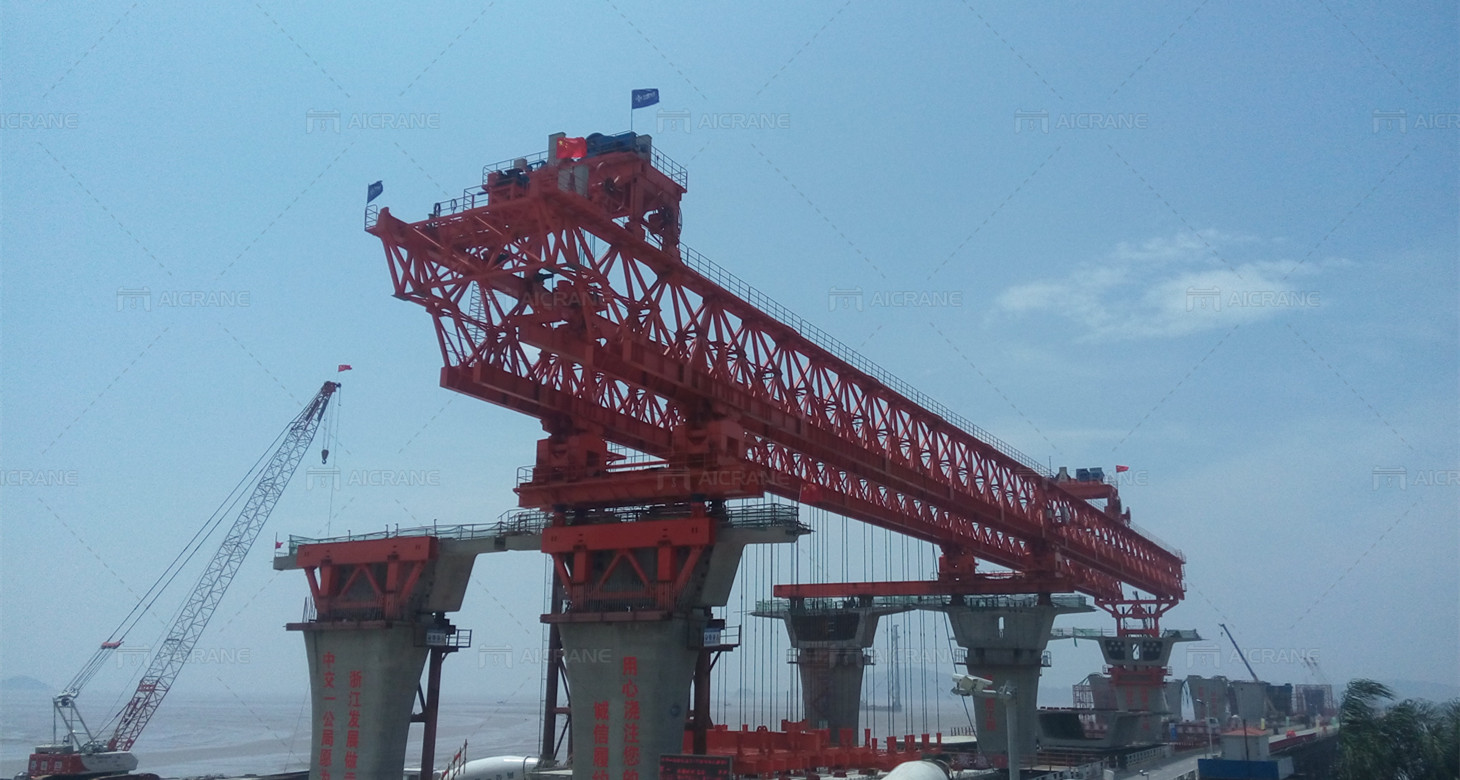Launching gantry cranes are crucial pieces of equipment in construction projects, particularly in the construction of bridges and viaducts. These specialized cranes are designed for precision and efficiency in lifting and placing heavy segments during the construction of elevated structures. Operating a launching gantry crane requires skill, attention to detail, and a commitment to safety. In this comprehensive guide, we will explore five essential tips for efficiently and safely operating a launching gantry crane.

Thorough Pre-Operation Inspection
Before initiating any lifting operations, conduct a thorough pre-operation inspection of the launching gantry crane. This includes checking all critical components such as cables, hooks, hydraulic systems, and electrical controls. Ensure that there are no signs of wear, corrosion, or damage to any parts. Verify that safety devices, such as limit switches and emergency stop buttons, are functioning correctly. Contact your crane manufacturer to get guidance of installation.
Inspect the load-bearing elements, such as cables and slings, for any signs of fraying or damage. The stability of the crane’s support structure, including the rails or launching beam, is paramount. Any deficiencies or irregularities detected during the inspection should be addressed promptly, and the crane should not be operated until it is deemed safe for use.
Rigorous Operator Training
Launching gantry cranes require skilled operators who are well-versed in the specific nuances of their operation. Rigorous training is essential to ensure that operators understand the crane’s controls, load capacities, and safety protocols. Operators should be trained to interpret load charts, understand the effects of environmental conditions, and respond to emergency situations.
Regular training sessions and refresher courses should be conducted to keep operators up-to-date with the latest safety standards and operational best practices. Additionally, operators should have a clear understanding of proper communication procedures with other team members involved in the construction project.
Adherence to Load Capacity Guidelines
Launching gantry cranes are designed with specific load capacities that must not be exceeded during lifting operations. It is crucial to adhere strictly to these load capacity guidelines to prevent overloading, which can lead to structural failure and accidents. Consult the crane’s load charts and capacity tables to determine the maximum allowable loads for different configurations.
Prior to lifting any load, accurately calculate the weight of the load and ensure that it falls within the crane’s specified capacity for the given radius. Overloading is a serious safety risk that can compromise the integrity of the gantry crane and pose a threat to personnel and the construction site. Always err on the side of caution and refrain from lifting loads that exceed the crane’s rated capacity.

Precise Load Positioning and Alignment
Launching gantry cranes are often used for positioning and placing heavy segments with precision. Proper load positioning and alignment are critical to the success of construction projects, especially in bridge construction where segmental elements must fit seamlessly together. Operators should use the crane’s controls with precision to position the load accurately in accordance with project specifications.
Clear communication between the crane operator and ground personnel is essential for ensuring precise load positioning. Utilize communication tools such as radios or signaling systems to convey instructions effectively. Regular checks should be conducted to verify the alignment of lifted segments with the target location, and adjustments should be made as necessary to achieve the desired accuracy.
Continuous Monitoring of Environmental Conditions
Environmental conditions can have a significant impact on the safe operation of launching gantry cranes. Wind speed, weather conditions, and ground stability are factors that must be continuously monitored during crane operations. High wind speeds, in particular, can compromise the stability of the heavy duty crane and create hazardous conditions.
Establish strict protocols for monitoring environmental conditions and implement wind speed restrictions that dictate when crane operations must be suspended. The crane operator and project supervisors should have access to real-time weather information, and regular updates should be communicated to the entire construction team. If adverse weather conditions are detected, operations should be halted promptly until safe conditions are restored.
In conclusion, operating a launching gantry crane demands a combination of technical expertise, thorough training, and an unwavering commitment to safety. Following these five essential tips—conducting pre-operation inspections, providing rigorous operator training, adhering to load capacity guidelines, ensuring precise load positioning, and continuously monitoring environmental conditions—will contribute to the efficient and safe operation of the crane. A well-operated launching gantry crane not only enhances construction project productivity but also prioritizes the well-being of personnel and the integrity of the structures being built.